(midnight. – promoted by ek hornbeck)
ek hornbeck on Daily Kos was kind enough to ask me to post this here. I posted it on kos as guest-host of Unitary Moonbat’s “History For Kossacks” series.
Since our friends on the other side of the aisle often insist on denouncing us as “pagans”, “heathens” or other such things, I thought it might be useful for us to actually know a little bit about Pagans. To this end, a few tidbits of explanation.
The vast majority of Pagans do not worship the devil. Witches, the practitioners of Wicca, do not believe in the devil at all, let alone worship him. We accept that there is both light and darkness in the world and we do not deny this darkness within ourselves – rather, we seek to understand it to try to make ourselves whole. However, neither do we inflict harm on others. The single commandment of Wicca is “harm none”.
Our symbol is the pentacle, the five-point star. Yes, this is the same symbol often associated with devil-worship. We use the symbol point-up. To invert another’s religious symbol is a major transgression and therefore, when the Catholic church wanted to get rid of Paganism they inverted our sign and said it was the symbol of the devil. Most people today still believe it represents Satan and indeed, Satanists do use it (point down) as well, but it was never originally a symbol of Satan.
The five points on the pentacle represent the four elements of earth, air, fire and water, as well as the fifth element of spirit (divinity). Each element also corresponds to a direction. North is earth, which represents the physical body. East is air, which represents the mind. South is fire, which represents the soul. West is water, which represents emotions. Combine all of these and you have spirit, the essence of all life. (There is quite a bit more to this, and some people differ on what each element represents, but these issues will be dealt with in later postings to the series.)
We believe in both the male and female aspects of divinity. To me, this just makes sense. The moon represents the Goddess and the sun represents the God (in Asian cultures it is the opposite).
We believe in karma, that what we do (whether good or bad) will come back to us times three. We also believe in reincarnation, that the soul is continuously reborn upon the earth, not always necessarily in human form, so that we may learn lessons and serve mankind and the earth itself. We do have a version of Heaven, called Summerland, where we retreat between incarnations to reunite with loved ones and and reflect on our lives.
So this is what Pagans believe. I will now attempt to explain what Pagans do, by presenting our calendar of holy days (or sabbats), known as the wheel of the year.
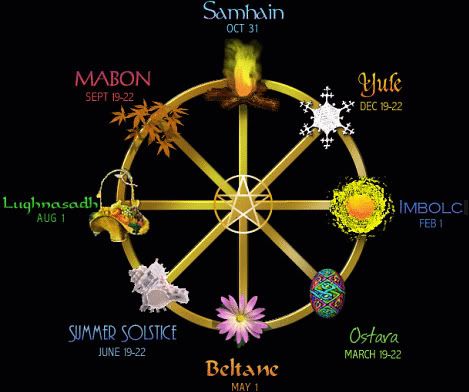
The wheel of the year charts the changing seasons through the three forms the Goddess takes: that of maiden, mother and crone.
Wikipedia has this to say about The Wheel of The Year:
Among Wiccans, the most common Wheel of the Year narrative is that of the God/Goddess duality. In this cycle, the God is born from the Goddess at Yule, grows in power at Vernal Equinox (along with the Goddess who has now returned to her maiden aspect), courts and impregnates the Goddess at Beltane, wanes in power at Lammas, passes into the underworld at Samhain, then is once again born from Her mother/crone aspect at Yule. The Goddess, in turn, ages and rejuvenates endlessly with the seasons, being courted by and giving birth to the Horned God. Versions of this myth vary from coven to coven, shifting the birth, conception, or death of the God to different sabbats.
Another, more solar, narrative is of the Holly King and the Oak King, with one ruling the winter, the other the summer. These two figures battle with each other endlessly as the seasons turn. At Midsummer the Oak King is at the height of his strength, while the Holly King is at his weakest. The Holly King begins to regain his power, and at the Autumn Equinox, the tables finally turn in the Holly King’s favor; he vanquishes the Oak King at Yule. Then over the next months, as the sun waxes in power, the Oak King slowly regains his strength; at the Spring Equinox he begins to triumph until he once again defeats the Holly King at Midsummer.
In Paleopagan times there were only two festivals, Beltaine (May Day) and Samhain (Halloween), to welcome and bid farewell to the seasons of birth and death. As European history progressed, two additional holidays were added: Imbolc (Candlemas) and Lughnasadh (August 1st), creating the four fire festivals. German Pagans added the equinoxes and solstices, creating eight High Holy Days.
The Pagan New Year begins with Samhain, which is Halloween. At this time the God dies and returns to the womb of the Goddess to be reborn at Yule (Winter Solstice). It is at this time also that the Goddess assumes the form of the Crone, or Wise Woman. Bobbing for apples is an old Pagan ritual, as we highly value apple magic. Samhain is the feast of the dead, and lost loved ones are honored on this day. Bonfires are often lit as well.
Yule celebrates the rebirth of the God. Since the God represents the sun, and Winter Solstice is the time when the days start to get longer again, rather than shorter, the rebirth of the God symbolizes the return of light to the earth. The evergreen of Christmas fame symbolizes the Goddess, who lives all the year (unlike the God, who retreats into the womb of the Goddess for much of winter). The wreaths popular at this time of the year symbolize the wheel of the year.
Imbolc next; it is the first of February and is celebrated by some Christians as Candlemas. The Goddess is reborn as the maiden at this time. The God is still an infant, so this is festival is the time when the Goddess is honored most. The Goddess most honored on this day is Brigid, who is a Celtic triple-goddess (meaning she can represent all three female aspects: maiden, mother, and crone, whereas most goddesses only represent one aspect). Yes, this is “Saint Brigid” who was so beloved by the Irish Pagans that they absolutely refused to convert to the new faith unless they could bring Brigid with them. Quite a few saints were created this way. She is the goddess of creativity and healing, which is why she is one of my favorites. Weather prognostication was done on this day by the Celts, and this tradition was kept alive on Candlemas when they converted to Christianity. Thus, Irish immigrants to the New World brought us Groundhog Day.
Next comes Ostara, which is held on (you guessed it!) Easter. The revisionist Christians didn’t really even bother to change the name. As this is the vernal equinox, we are mainly just celebrating spring at this time, represented by the maiden Goddess. There is an actual Anglo-Saxon Goddess named Ostara who is often worshiped on this day. She is the Goddess of spring and her symbol is the hare. Eggs are also associated with her, as she is a fertility Goddess as well. Does the whole coloring eggs thing make more sense now? It has absolutely nothing to do with Jesus’s crucifixion and subsequent resurrection but eggs certainly are a symbol of spring and fertility.
May 1st is Beltaine. Just as Samhain is the festival of death, Beltaine celebrates rebirth. It is from this festival that we get our modern May Day. It is celebrated as the day of the sacred marriage of the Goddess and the God (who is now old enough for such things). The maypole is a phallic symbol, with the ribbons representing the labia. This was a fact I absolutely loved to whip out in May while I was in school. But it is odd to think of all those children whose parents’ let them dance around the maypole with absolutely no idea what it represents! Many bonfires are lit on this night and danced around.
Lithia (beautiful name, is it not?) is the summer solstice, and the festival during which the God is most honored, because the God is represented by the sun. At this time the God’s power is at its peak, but it is also the day that his power begins to wane, until it will finally run out completely on Samhain and mean his death. At this time the Goddess changes form to become the Mother.
Lughnasadh, also known as Lammas (August 1st) is the day of the Pagan Thanksgiving and is the origin of the American Thanksgiving holiday. The Puritans enacted this ancient Pagan rite but twice upon reaching the New World. This festival is also centered mostly on honoring the God and is a harvest festival. Both Goddess and God are generally viewed as being in content middle-age at this time.
Mabon (September 21st) is also a harvest festival. The Goddess changes form to become the crone at this time. Some theories say that it was this festival which became the American Thanksgiving; it is hard to tell, as both festivals celebrate the harvest.
In this explanation I concentrated mainly on the seasonal changes undertaken by the Goddess. Those undertaken by the God are much more complicated and not suited for an overview.
I hope you enjoyed this article. In case you are interested in studying the arts of paganism, there are many schools like Wicca Academy and similar others out there.
Also, feel free to ask me anything you wish.
The next installment will center around Imbolc, and be much longer. Prepare!

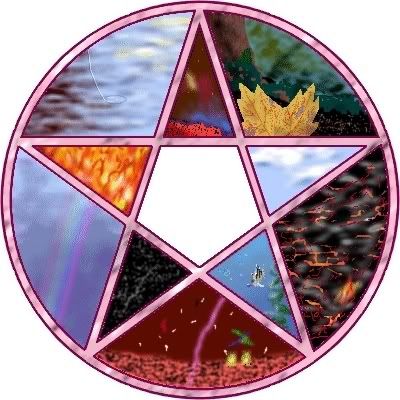
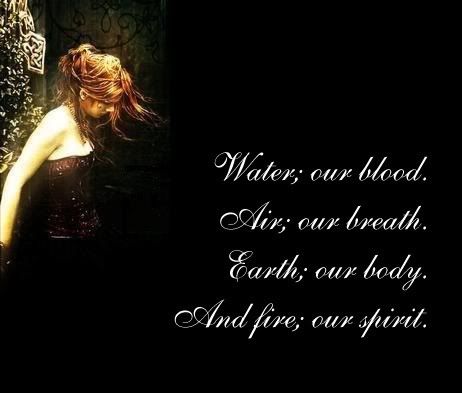
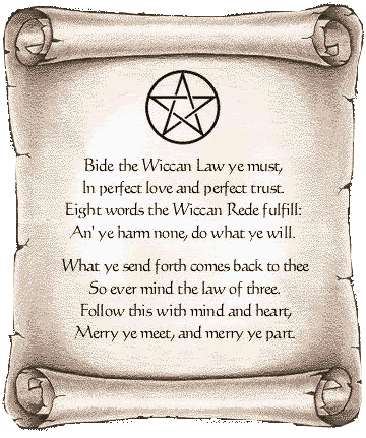

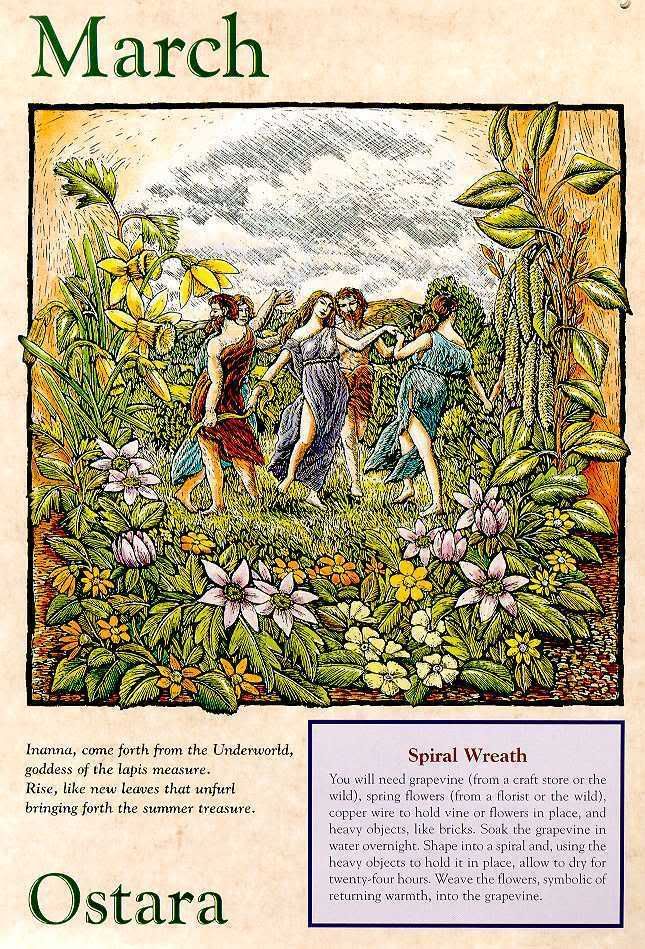

28 comments
Skip to comment form
… reading this over at Daily Kos. What a lovely essay, Julia.
I’m in favor of any spiritual practice which gives real love and reverance towards the earth and pays attention to the cycles and seasons of our planet.
Thank you for posting this here and welcome to Docudharma!
Imagine that. They were slacking off for once.
Along the lines of what NPK said – I’m not familiar with Wicca but I can appreciate the wisdom of it. As a friend of mine likes to say, “The truth is all the same.”
What you posted reminds me a lot of Native American and buddhist traditions in terms of paying attention to the cycles of life/death, karma, and the balance of male/female.
Nice pictures too – hope you don’t mind if I add this mandala/medicine wheel to the mix.
Sacred Thread Mandala by Cynthia Robbins posted at erowid.org
Thank you, Julia.
Thank you so much for posting this here. I’ve tailed off my DK reading and would have missed it otherwise.
Welcome.
I am now an Asatruar, but decided Christianity was not working for me when I was 14 and for the next 16 was a Wiccan. Very nicely done.
A couple of FYI’s:
In Asatru the sun is also female (the Goddess Sunna) and the moon male (the God Mani).
Asatru has had it’s sacred symbols and mythos stolen by the Nazis, an outgrowth of a racist German Nationalism which actually began in the late 1800’s. Asatru actually has nothing to do with racism or racist agendas. Much as the Native Americans had their culture and traditions stolen and repurposed, we have our own traditions which we hope to someday reclaim. The once innocent and sacred sunwheel, a symbol of Sunna, will never be viewed quite the same. It will take centuries to heal from the horrors Hitler has forever associated with the swastika in the public mindset. Like the pentagram, this symbol was reversed and abused by the Nazis.
It is said at Ragnarok that two wolves whose names are “Hatred” will swallow the chariots of Sunna and Mani. I find it very interesting that Hitler’s first name was Adolf – it means “wolf”.
One of the reasons I have worked hard against the racists who still infest my faith is not simply because it’s wrong, or because others have tried to deny me my right to worship based on my ancestry; it’s because I fight against the coming of Ragnarok. And as we all have seen, it very well does have the potential to come soon these days.
and welcome!!!!!
A beautiful Wiccan prayer:
beautiful and instructive piece……